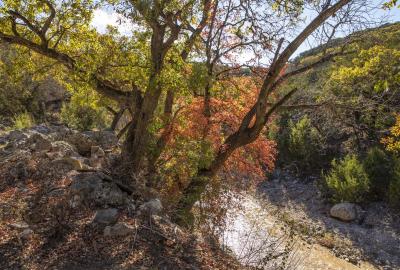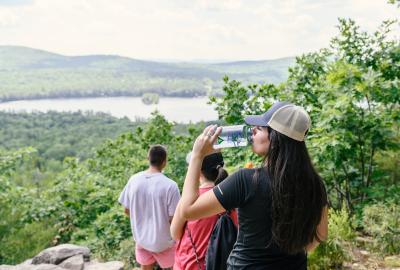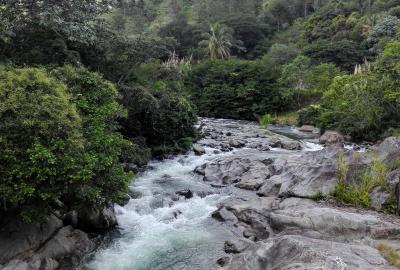Colombia
Cuenca Verde (Medellín Water Fund)

© Andrés Gómez
Cuenca Verde (Medellín Water Fund)
Medellin , Colombia
NbS Interventions: Forest Protection, Active Restoration, Passive restoration
Cuenca Verde (The Medellín Water Fund) invests in nature-based solutions projects that improve water quality for the municipalities in the Aburrá Valley, including Medellín, the second most populous city in Colombia. Projects reduce sediment and nutrient loading in the Rio Grande II and La Fe reservoirs, engage communities in the management of their land and restore critical habitat for the valley’s biodiversity. The water fund has benefited 866 families, improved the management of approximately 20,000 hectares and planted more than 255,000 trees to improve the ecological integrity of the basins that supply the region’s water.
Contact: maria.gomzdiaz@tnc.org
Texas
Edwards Aquifer Project

© Pierce Ingham
Edwards Aquifer Project
San Antonio , Texas
NbS Interventions: Targeted habitat protection
Central Texas is one of the fastest-growing regions in the country. While this growth can be credited for much of the state’s recent economic success, it also poses a serious threat to the area’s drinking water. A compromised water supply will only further compound other environmental challenges. The Edwards Aquifer project is designed to help. One of the largest, most prolific artesian aquifers in the world, the Edwards Aquifer serves as the primary source of drinking water for nearly 2 million Central Texans. TNC has worked with the City of San Antonio and partners to protect approximately 21 percent of the recharge zone by helping secure nearly $1 billion in citizen-authorized investments for Edwards Aquifer protection. Those investments have conserved more than 160,330 acres of valuable green space—and counting—atop the aquifer, helping improve water quality for all.
Website: Texas Commission of Environmental Quality
Contact: ryan_smith@TNC.org
Kenya
Eldoret-Iten Water Fund

© Lucia Cervantes Salas/TNC
Eldoret-Iten Water Fund
Eldoret , Kenya
NbS Interventions: project under development
Rapidly expanding agriculture is negatively impacting the supply of clean water for the fast-growing Eldoret and Iten urban centers. Farmers have encroached on cloud forest preserves and are now intensively farming and grazing on steeper and steeper slopes. Growing demand for charcoal and lumber has also hastened the rate of deforestation, and law enforcement agents no longer have the capacity to protect forests against these threats. As a result, critical habitat has been lost, water quality has worsened, and users are experiencing increased competition for freshwater.
The Eldoret-Iten Water Fund will reduce forest degradation in the Cherangany and Elgeyo Hills and the North Mau water towers. By working with local farmers to implement sustainable soil and water conservation measures, the project expects to increase farm and household income by 30 percent, while protecting local biodiversity hotspots, which are home to indigenous trees and regionally threatened bird and animal species.
Contact: florence.mugi@TNC.ORG
Ecuador
Fund for the Protection of Water (FONAG)

© Federico Vieneger
Fund for the Protection of Water (FONAG)
Quito , Ecuador
NbS Interventions: forest & grasslands protection and restoration
In 2010, TNC and the Municipal Drinking Water Company of the City of Quito (EPMAPS) joined forces to restore Ecuador’s high Andean grasslands, an area rich in biodiversity that supplies water to Quito’s 2.6 million residents. Recognizing that continued deterioration of the watershed was putting the city’s water supply at risk, stakeholders created the Fund for the Protection of Water (FONAG) as a mechanism to jointly invest in watershed protection and the socio-economic development of the communities that live there. The collective action platform has mobilized an endowment of more than US$10 million and operates on an annual budget of more than US$1.5 million. Since its inception, FONAG has worked with more than 400 local families to protect and restore more than 40,000 hectares of páramos and Andean forests.
Website: Fondo para la proteccion del agua
South Africa
Greater Cape Town Water Fund

© Shutterstock
Greater Cape Town Water Fund
Cape Town , South Africa
NbS Interventions: invasive species removal
The Greater Cape Town Water Fund was designed to address critical water shortages facing the city. By removing thirsty invasive plants in Cape Town’s mountainous watershed that have been “stealing” the region’s limited water, the project is expected to save 54 billion liters of water per year within 6 years, increasing to 100 billion liters by 2045. Those savings equate to one-third of Cape Town’s annual supply for its 4 million residents, neighboring municipalities and agriculture. The hard work to remove invasive plants across the area’s rocky terrain also protects the region’s native fynbos habitat, which is one of the rarest plant communities on Earth. Undisturbed by ice ages and ecological catastrophes for millions of years, fynbos harbors an astonishing 9,000 plant species, more than 70 percent of which are found nowhere else on Earth.
As of December 2021, the team had restored over 18,000 hectares, resulting in 1.3 billion gallons of water saved for the Greater Cape Town region every year.
Website: Greater Cape Town Water Fund Decision Support System
Contact: Louise.Stafford@TNC.org
Minnesota
Minnesota Headwaters Fund
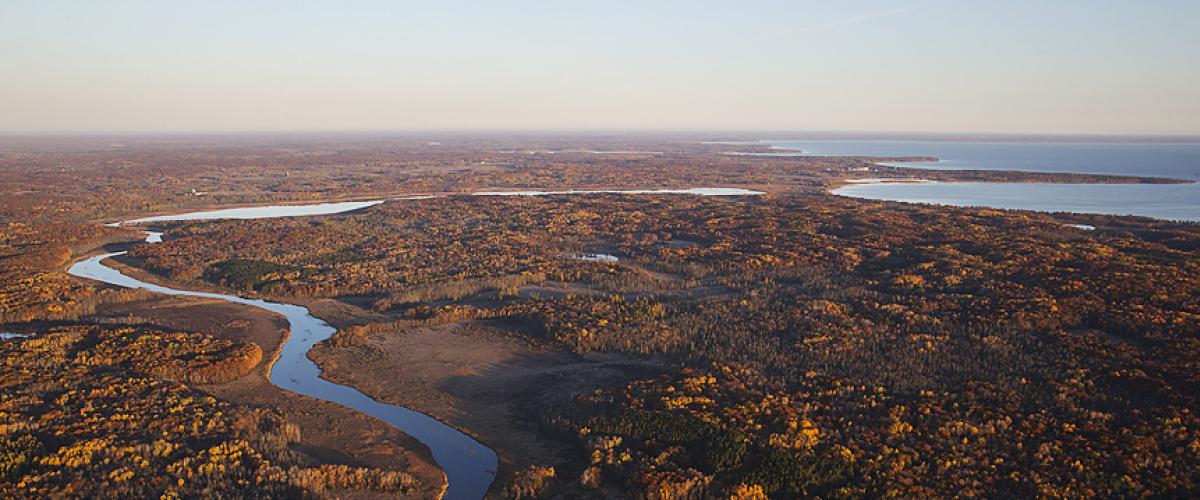
© Richard Hamilton Smith
Minnesota Headwaters Fund
Minneapolis , Minnesota
NbS Interventions: Forest protection, riparian restoration, wetland restoration
The Minnesota Headwaters Fund preserves the value of the 12 million-acre headwaters basin of the Mississippi River, including its role in providing clean, low-cost drinking water to Minnesota’s largest cities, Minneapolis, St. Paul and St. Cloud, which together represent more than one million people. Conversion of more than 100,000 acres of forested lands in the watershed to agriculture that began in the mid-2010s has degraded critical habitat, water quality and sustainability of water supply. The project protects and restores forested lands, riparian areas and wetlands that are critical to sustaining water quality and quantity. TNC is using a science-based protection plan to identify the 200,000 acres of lands most critical for protecting water, building a strong network of partners and leveraging public funds to achieve the goals of the plan.
Contact: rbiske@tnc.org
England
Norfolk Water Strategy Programme

© Sophia Tremolet/TNC
Norfolk Water Strategy Programme
Norwich , England
NbS Interventions: Edge of Field/ Runoff attenuation features, Riparian restoration, soil management practices, arable conversion to grassland,
Residents and businesses of Norfolk county in Eastern England are already feeling the effects of climate change. Increased flooding, pollution and water risk are impacting the region’s economy and unique biodiversity that relies on the landscape’s fragile chalk streams. In response, county authorities joined forces with TNC, the water service provider, Anglian Water, and an authority responsible for long-term water resource planning, Water Resources East, to investigate how to sustainably manage water resources and intra-year variability. Together, we are developing an investable program of nature-based solutions designed to address the county’s water security challenges. Multiple partners will coordinate and execute the program via a collective action platform, alongside the Norfolk Water Fund, an investment vehicle to raise funding for prioritized investments. Science-based modeling is underway to test the extent to which nature-based solutions can deliver water quantity, flow and storage benefits.
Website: Norfolk Water Fund
Contact: rob.cunningham@tnc.org
New Mexico
Rio Grande Water Fund

© Mary Blumhoefer
Rio Grande Water Fund
Albuquerque , New Mexico
NbS Interventions: Forestry best management practices, fire management, revegetation and riparian restoration
The Nature Conservancy and partners launched the Rio Grande Water Fund in 2014, following the devastating 2011 Los Cochas Fire which burned 156,000 acres in the Jemez mountains and disrupted water delivery to Albuquerque for 40 days. The collaborative large-scale effort—which now has 100 signatories—is designed to restore 600,000 acres of at-risk forests from southwest Colorado to Albuquerque. The effort includes thinning over-dense trees followed by leading controlled burns, restoring streams and, as of 2020, planting trees with drought-resistant seedlings to bring wildfire-scarred land back to life.
Project benefits include reduced wildfire risk, source water protection for one million people, safer communities, economic growth, enhanced recreational opportunities and improved wildlife habitat. Already, four potentially serious fires that hit forested areas treated by thinning and prescribed fire changed behavior and became more controllable.
Website: Rio Grande Water Fund
Contact: melissa.mclamb@tnc.org
Maine
Sebago Clean Waters

Jerry Monkman ecophotography.com
Sebago Clean Waters
Sebago , Maine
NbS Interventions:
Sebago Clean Waters is a coalition of organizations, including TNC and the local water utility, working to protect Sebago Lake—the drinking water source for 1 in 6 people in the state of Maine. The coalition is working to conserve forests and implement other water-quality initiatives in the Sebago Lake watershed. The forests that naturally filter the water for the growing metropolitan area of Portland are in jeopardy due to increasing development pressure. By working collaboratively with area businesses, municipalities, and local landowners, Sebago Clean Waters aims to protect 25 percent (35,000 more acres) of priority forestland in the watershed by 2032. In addition to benefiting water quality, this forest conservation work protects fish and wildlife habitat, buffers the impacts of a changing climate, enhances community well-being through recreational opportunities, and supports a thriving local forest products and tourism economy. As of December 2022, the coalition had protected approximately 10,000 acres of watershed forests, nearly one-third of its goal.
Website: https://www.sebagocleanwaters.org/
Contact: info@sebagocleanwaters.org
Kenya
Upper Tana-Nairobi Water Fund Trust

© Roshni Lodhia
Upper Tana-Nairobi Water Fund Trust
Nairobi , Kenya
NbS Interventions: Forest Restoration, Agriculture Best Management Practices, Riparian Restoration & Protection
The Tana River provides 95 percent of the water supply for Nairobi and generates 40 percent of the energy through hydropower that powers the nation. The region is home to a rich diversity of plants and iconic wildlife. For decades, forests on steep hillsides along the Tana River have been slowly converted to farming for tea, coffee and other produce. Here, unsustainable farming practices are sending sediment into the river, resulting in higher costs for water treatment, lower water levels, and lower hydropower output. The water fund is working to implement sustainable farming practices and introduce sediment management interventions like riparian protection, agroforestry, terracing, and reforestation. It is on course to reach 50,000 farmers, increase water supply by 15 percent and reduce sediment by 20 percent by 2025.
Contact: director@nairobiwaterfund.org
Ecuador
Water Fund for the Conservation of the Paute River Basin (FONAPA)

© Erika Nortemann/TNC
Water Fund for the Conservation of the Paute River Basin (FONAPA)
Cuenca , Ecuador
NbS Interventions: forest protection, agriculture best management practices
The Paute River basin is one of the most important watersheds in Ecuador. It’s home to the El Cajas and Sangay National Parks, and supplies about 35 percent of the country’s energy. Through partnerships with local communities who call the National Parks home, FONAPA has protected about 25 percent of the forests found in the basin and are working to permanently protect more by passing local ordinances to conserve source watersheds. Cutín, legally constituted by the Ministry of Labor in 2009, is a micro-enterprise funded by the Water Fund to financially support community members who promote and implement NbS and serve as guardians of the forests and páramos in the region. Over 1,500 families have directly benefited from FONAPA’s conservation and community development activities.
Website: Fono para el agua
Dominican Republic
Yaque del Norte Water Fund
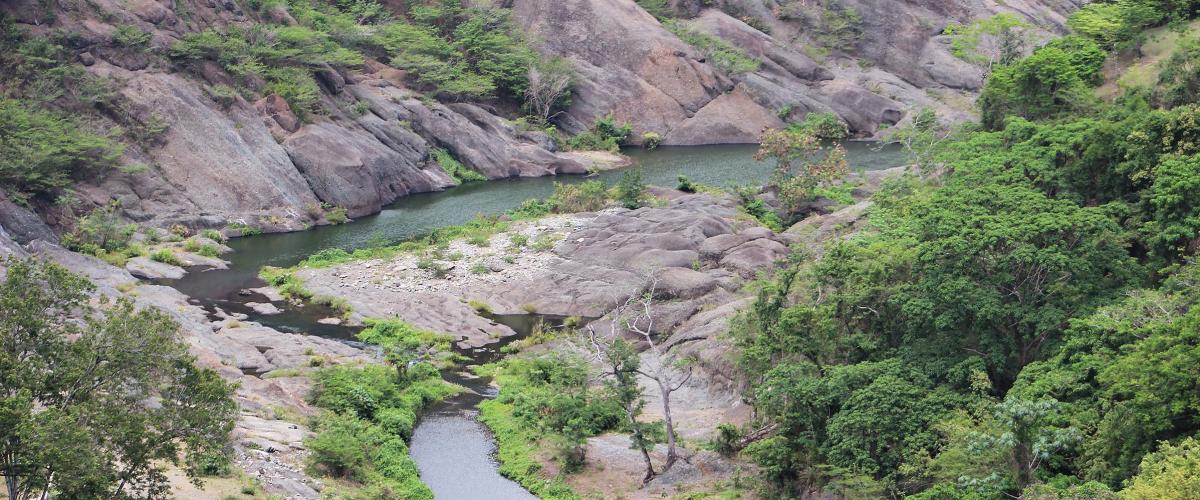
© Saul Abrev/TNC
Yaque del Norte Water Fund
Santiago , Dominican Republic
NbS Interventions: Forest Protection, Restoration, Riparian Restoration, Agroforestry
The Yaque del Norte Water Fund contributes to the water security of the 7,053 km2 Yaque del Norte river basin, which includes Santiago, the second most populous city in the Dominican Republic (800,000 residents). The project protects and restores forests and riparian areas to improve the water quality and quantity of the watershed. Beginning in 2000, forested land had been increasingly converted to ranchlands to support the growing agricultural industry, and, as a result, biodiversity, community resiliency and water quality declined. TNC supports the Water Fund by employing science-based methodologies to identify and prioritize areas for investment. So far, the Fund has improved the management of 517 hectares of forests and constructed 21 artificial wetlands to provide safe sanitation for over 8,100 people.
Contact: carlos.garcia@tnc.org

© Julian Jackson


